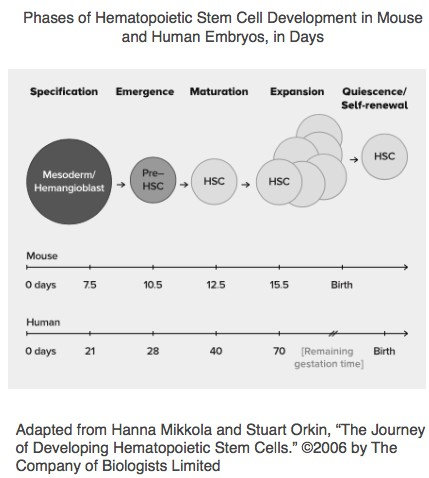Questions 1-11 are based on the following
passage.
Adapted from “A Molecular Model of Blood Cell Renewal.” © 2004 by the Public Library of Science.
A developing organism captured on time-lapse video is a
wonder to behold. If you're watching a chick embryo, by day
3, you'll see millions of cells engaged in a frenzy of activity,
Line as rapidly dividing cells migrate to new positions, acquire the
5 haracteristics of specialized cells, and craft well-defined
tissues, organs, and limbs in just under two weeks. In
addition to the cells destined for specialization is another
important group, stem cells, whose progeny have two very
different fates. They can either “self renew”—that is, make
10 identical copies of themselves—or generate intermediate
progenitor cells that give rise to mature, differentiated cells.
Both differentiation and self renewal are guided by an
elaborately regulated genetic program, which transforms
embryonic stem cells into the many different cell types that
15 make up the body. Adult stem cells share the hallmark trait of
self renewal, but are relatively rare: in bone marrow, the
source of hematopoiesis, or blood [formation], only an
estimated one in 10,000–15,000 cells is an adult
hematopoietic stem cell (HSC).
20 Studies that have compared the gene expression profiles of
different types of stem cells to identify genetic signatures of
“stemness” have found only a limited number of signature
genes. And the molecular mechanisms that regulate this so-
called potency and the self renewal process have remained
25 obscure. Now, focusing on HSCs, Margaret Goodell and
colleagues have undertaken a systematic evaluation of HSC
renewal. The study identifies molecular signatures associated
with discrete stages of the HSC self renewal cycle and
proposes a molecular model of the process.
30 HSC renewal passes through three stages: quiescence,
activation and proliferation, and a return to the dormant state.
HSCs give rise to both red blood cells, which carry oxygen
and carbon dioxide, and white blood cells, which fight
infection. Once activated by a trigger, dormant HSCs engage
35 a regulatory program that rapidly churns out billions of cells,
then puts the brakes on cell division, prompting the return to
a nondividing, quiescent state.
To understand the genetic programs underlying this
process, Goodell and colleagues induced proliferation in
40 HSCs (with the chemotherapeutic drug, 5-fluorouracil, or
5FU), then allowed the cells to return to quiescence, so they
could characterize the changes in gene expression that
occurred during each stage. They compared these time-
specific patterns to the gene expression profiles of naturally
45 proliferating fetal mouse HSCs (which undergo massive
proliferation) and quiescent adult mouse HSCs (which hardly
divide at all) to find genes associated with the two different
states.
Genes were grouped into proliferating or quiescent groups
50 based on when they were expressed after 5FU treatment, and
these groupings were refined based on comparisons to
previously published HSC gene expression data. Functional
analysis of these genes found a bias toward genes involved in
cell division processes in the proliferation stage and toward
55 cell division inhibitors in the quiescent stage, supporting the
logic of the groupings.
With these results, Goodell and colleagues constructed a
model of the HSC self renewal cycle: quiescent HSCs
maintain a “state of readiness,” molecularly speaking, that
60 allows a quick response to environmental triggers. A stressor
(like the chemotherapy mentioned above) triggers a “prepare
to proliferate” state—a kind of pregnant pause—and then the
proliferation machinery kicks in, going through an early and
late phase before quiescence returns. By shedding light on
65 the molecular mechanisms of stem cell renewal, this study
will aid efforts to develop stem-cell-based clinical therapies,
which depend on replicating the HSC self renewal cycle to
replenish diseased or damaged tissue, and will ultimately
guide efforts to grow stem cell colonies outside the body, a
70 long-standing goal that would have many clinical
applications.